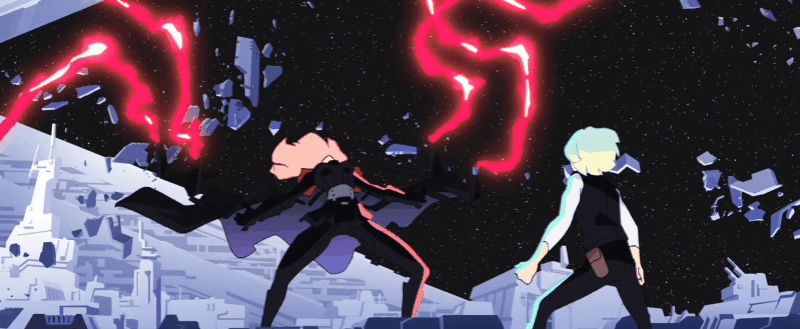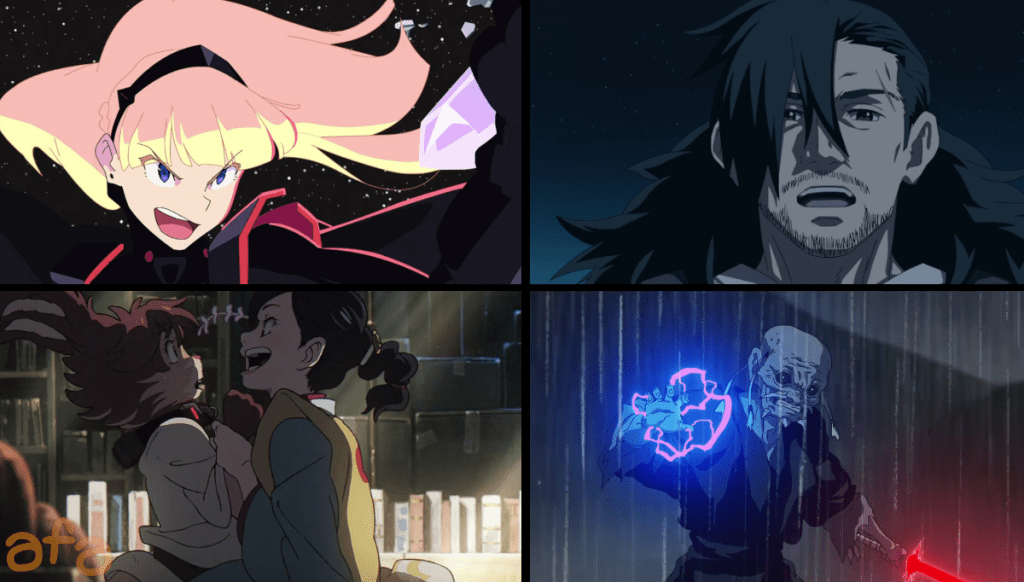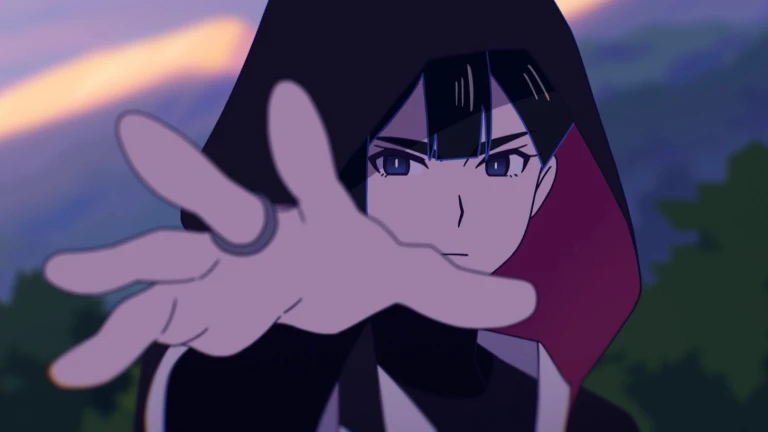Star Wars: Visions may be the best thing that Disney has done since they bought Lucasfilm in 2012. I don’t mean that it’s the best piece of Star Wars media that Disney has produced (I myself am stuck between the first season of The Mandalorian and The Force Awakens), but that it’s the most original and exciting project that Disney has brought to the IP and that’s worth celebrating.
The anthology series, made up of 9 shorts ranging from 13 to 22 minutes in length, brings celebrated anime creators to the Star Wars universe and lets them run wild with whatever stories they want to tell, allowing them to ignore existing canon and timelines. It’s this absolute freedom that leads to both some of the best and most disappointing aspects of Visions.

Some of the stories are thrillingly original, feeling free of any ongoing storylines or motifs in the Star Wars universe, but others feel simply like rehashes of things we’ve seen over and over again in the films and existing TV shows, which is all the more disappointing knowing that the creators had total freedom to create something completely original.
Sometimes, the shorts manage to combine something entirely new to Star Wars with too much existing lore or too many well-known characters. The worst offender of this issue is Studio Colorido’s Tatooine Rhapsody which essentially places the music anime subgenre into the Star Wars universe.
But instead of simply delivering a story focused on musicians in the galaxy, the short includes Boba Fett (fittingly voiced by Star Wars stalwart clone and Fett actor Temuera Morrison) and Jabba the Hutt. Which all ties it too closely to existing characters to feel truly exciting or original, and makes it seem like an unimportant side story to the important story we already know.
Others, like Production I.G.’s The Ninth Jedi and Trigger’s The Twins, are free of any references to specific characters and events in the Star Wars universe, but draw heavily on existing (and oft-repeated) story beats and themes within the canon. Those that create their own stories around these classic Star Wars motifs are more exciting than those that connect to the existing storylines, but the most exciting of all the shorts are those that either create their own stories whole cloth or have stories that are so elemental that their setting in the Star Wars universe functions almost purely as an aesthetic choice instead of a key part of their narratives.

It’s also disappointing that nearly all of the shorts focus on humans. The Star Wars universe is full of existing alien species and a number of the shorts introduce original creatures, so the fact that only two of the shorts have main characters who aren’t human, and only one of those is a different organic species (the other is a droid), leaves something to be desired in terms of originality. Especially given that animation is not tied to the same practical concerns as live-action when it comes to creating or portraying otherworldly creatures.
It’s likely because Visions want to ensure that the audience can get emotionally invested in the characters that the majority of them are human, which is in itself an issue as none of the shorts are long enough to be emotionally impactful. And the ones that try to end up feeling somewhat embarrassing, as they lean into the extreme melodrama style of anime, with at least two of the shorts including giant tears welling up in characters’ eyes.
Perhaps the most significant problem throughout Visions is that it overexplains itself. Many of the shorts rely far too heavily on speech, whether that be between characters, characters talking to themselves, or even expository voiceover to explain things that have either already been conveyed visually, or don’t need to be explained at all. While this is a problem, it also highlights how phenomenal the shorts look that a number of them might have been improved by fully removing the speech and allowing the story to be entirely communicated through the action. At least many of the voices are very recognizable. Along with Morrison reprising his role as Fett, the shorts feature the voice acting of Joseph Gordon-Levitt, Neil Patrick Harris, Allison Brie (who is clearly having a great time playing an archvillain), Henry Golding, George Takei, and James Hong.
But the narratives aren’t really what matters here. The stories can certainly make a short more or less enjoyable and interesting to the viewer, but what makes Visions special is the opportunity to see the Star Wars world in new art styles. Each of the shorts is beautifully unique, even the shorts that are created by the same studios (Science SARU and Trigger contributed two shorts each) look vastly different from one another. The shorts that might be a bit uninteresting narratively and thematically are still absolute eye candy for any fan of animation. The greatest strength of the anthology as a whole is the stunning backgrounds that the stories take place in, many of which combine traditional samurai film aesthetics and more Star Wars specific visuals, with Kamikaze Douga’s The Duel going so far as to overlay a film grain with scratches and blips.

Each short is more a Star Wars-inspired work of visual art than a Star Wars story that happens to be animated. And they all look great, in fact, the only issue is that some have a bit of difficulty perfectly melding their 3D and 2D elements, lending them a less grating version of the awkward look of Netflix’s Berserk. But even then the artwork and design of the worlds and characters are so good that it feels less like a significant problem and more like “oh well they didn’t quite reach perfection.”
But the aesthetic differences between the shorts don’t end at the animation styles, as almost all of the shorts include fight sequences. Some of these draw on the acrobatic fight style of the prequel trilogy, while others have more grounded (literally) fights that seem inspired by real martial arts, and some lean fully into the fact that this is anime after all and deliver wonderfully over the top, brightly colored, flash heavy fight scenes that are almost overwhelming in their visual assault.
Adding to this is the fact that there are a variety of different designs for lightsabers in the shorts. Many of them look like katanas, one includes a ring of light that acts as a handguard, another adapts its color to the wielder’s connection with the force, and the most interesting of them is a familial saber that includes an inscription on the blade. Some of the shorts also add light trails and motion blur to the lightsabers during duels, which looks great.
Plus, while most of the action is lightsaber-based, there is some variety. No lightsabers are drawn until about halfway through The Duel, and The Ninth Jedi recreates the speeder bike chase on Endor from Return of the Jedi, transposing the action into a beautiful snow-covered forest – here the callback feels more like an homage than retread, likely because the sequence is so engaging in its own right and it’s one of the few non-lightsaber focused action scenes.
Star Wars: Visions is a joy to watch. Even the shorts that aren’t exactly for me are, at the very least, interesting and visually arresting, because they expand the Star Wars universe and offer us unique (you guessed it) visions of the galaxy that we’ve never seen before. Each of the shorts has some flaws, and as with every anthology some of them are better than others, but on the whole, these glimpses at what Star Wars can be in the hands of anime masters are breathtakingly beautiful and truly thrilling. Here’s to hoping that we get the second batch of shorts that fix the minor flaws of this group.

